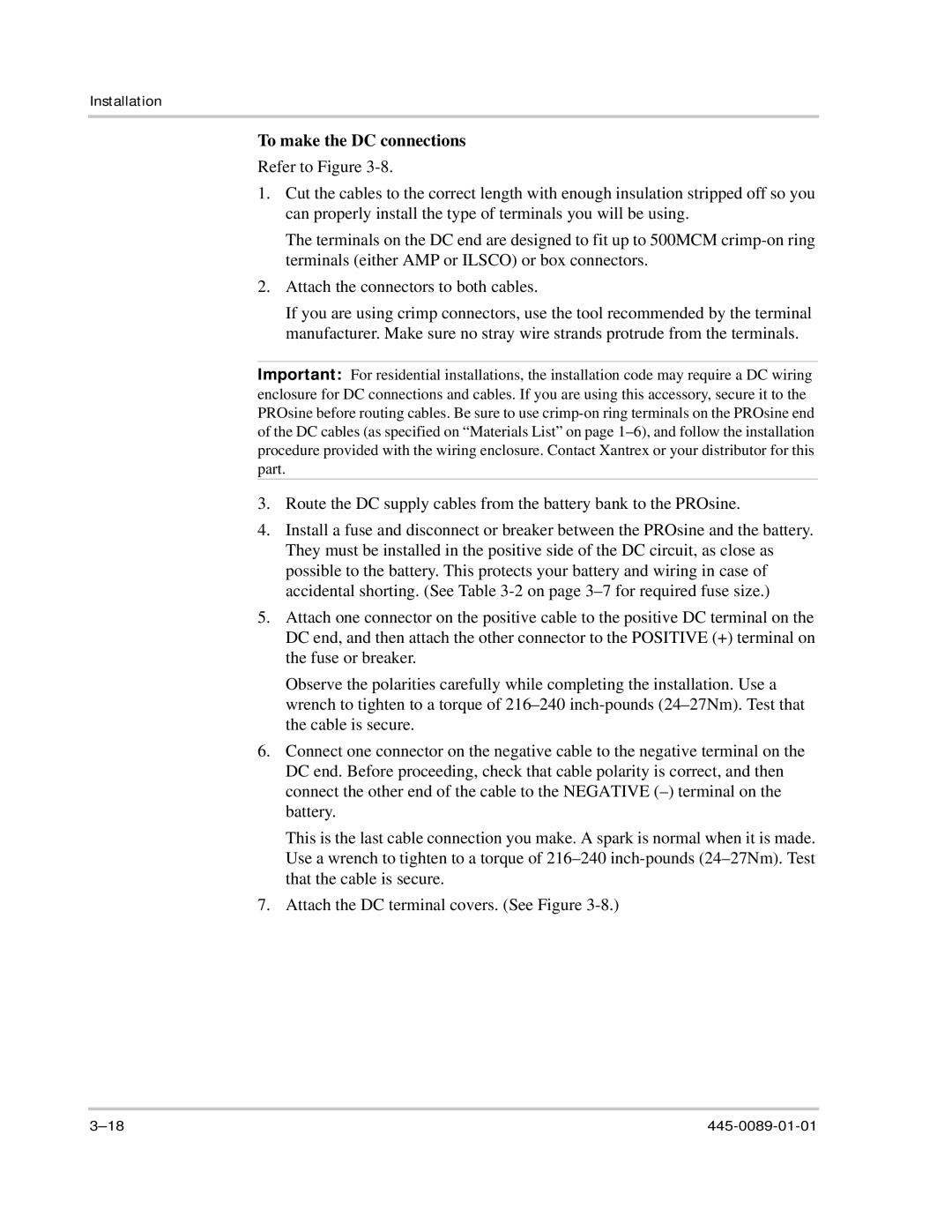
Installation
To make the DC connections
Refer to Figure
1.Cut the cables to the correct length with enough insulation stripped off so you can properly install the type of terminals you will be using.
The terminals on the DC end are designed to fit up to 500MCM
2.Attach the connectors to both cables.
If you are using crimp connectors, use the tool recommended by the terminal manufacturer. Make sure no stray wire strands protrude from the terminals.
Important: For residential installations, the installation code may require a DC wiring enclosure for DC connections and cables. If you are using this accessory, secure it to the PROsine before routing cables. Be sure to use
3.Route the DC supply cables from the battery bank to the PROsine.
4.Install a fuse and disconnect or breaker between the PROsine and the battery. They must be installed in the positive side of the DC circuit, as close as possible to the battery. This protects your battery and wiring in case of accidental shorting. (See Table
5.Attach one connector on the positive cable to the positive DC terminal on the DC end, and then attach the other connector to the POSITIVE (+) terminal on the fuse or breaker.
Observe the polarities carefully while completing the installation. Use a wrench to tighten to a torque of
6.Connect one connector on the negative cable to the negative terminal on the DC end. Before proceeding, check that cable polarity is correct, and then connect the other end of the cable to the NEGATIVE
This is the last cable connection you make. A spark is normal when it is made. Use a wrench to tighten to a torque of
7.Attach the DC terminal covers. (See Figure
